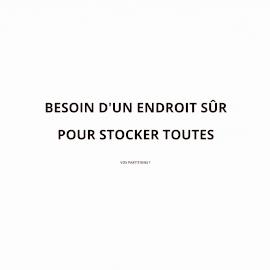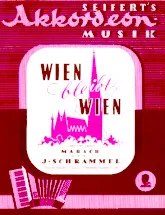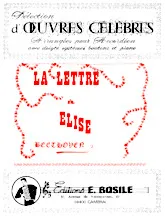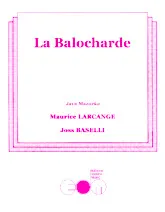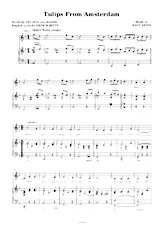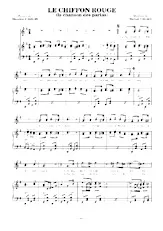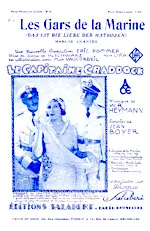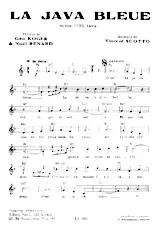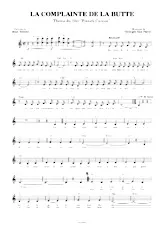Enjoy
30%
OFF - valid until
19-08-2025 23:59
details
"Wien bleibt Wien": Vienna's timeless anthem
The march "Wien bleibt Wien" (Vienna remains Vienna), composed by violinist and composer Johann Schrammel in 1887, is much more than a simple melody. It is a true declaration of love for the Austrian capital, capturing the soul of imperial Vienna at the end of the 19th century.
The origins of Schrammelmusik
Johann Schrammel (1850-1893) is a major figure in Austrian music. Together with his brother Josef, he popularized the musical style known as Schrammelmusik. This genre, originally played in Vienna's taverns and cafés, combines the rousing melodies of military marches, the lyricism of Viennese waltzes and the liveliness of polkas. The traditional instrumentation generally consisted of two violins, a double-necked guitar (the Schrammelgitarre) and a small clarinet.
A march for the Emperor
Composed at the request of Emperor Franz Joseph I for a military parade, the march "Wien bleibt Wien" immediately won hearts. Its joyful, nostalgic melody quickly spread beyond the barracks to become a popular hit. It epitomizes the festive spirit and elegance of Viennese life, a time when the city shone all over Europe.
An enduring legacy
Even today, "Wien bleibt Wien" is considered one of Vienna's unofficial anthems. It is heard at many celebrations, parades and concerts, reminding everyone that, despite the changes, the city's unique spirit remains eternal. It's a song that symbolizes Austria's cultural identity and the golden age of its music.
The march "Wien bleibt Wien" (Vienna remains Vienna), composed by violinist and composer Johann Schrammel in 1887, is much more than a simple melody. It is a true declaration of love for the Austrian capital, capturing the soul of imperial Vienna at the end of the 19th century.
The origins of Schrammelmusik
Johann Schrammel (1850-1893) is a major figure in Austrian music. Together with his brother Josef, he popularized the musical style known as Schrammelmusik. This genre, originally played in Vienna's taverns and cafés, combines the rousing melodies of military marches, the lyricism of Viennese waltzes and the liveliness of polkas. The traditional instrumentation generally consisted of two violins, a double-necked guitar (the Schrammelgitarre) and a small clarinet.
A march for the Emperor
Composed at the request of Emperor Franz Joseph I for a military parade, the march "Wien bleibt Wien" immediately won hearts. Its joyful, nostalgic melody quickly spread beyond the barracks to become a popular hit. It epitomizes the festive spirit and elegance of Viennese life, a time when the city shone all over Europe.
An enduring legacy
Even today, "Wien bleibt Wien" is considered one of Vienna's unofficial anthems. It is heard at many celebrations, parades and concerts, reminding everyone that, despite the changes, the city's unique spirit remains eternal. It's a song that symbolizes Austria's cultural identity and the golden age of its music.
details
The essential "Lettre à Élise": a piano work transcribed for accordion
The "Lettre à Élise", or more precisely Für Elise, is one of Ludwig van Beethoven's most famous piano pieces. Its popularity is undeniable, and its structure is a model of clarity and balance, a major asset for performers.
The form of the piece is a simple rondo, a musical structure that alternates a main theme with contrasting sections. It's this clarity that makes the score so logical and easy to follow. Here's how it breaks down:
Section A: The main theme (the rondo)
This is the most recognizable part. It's the delicate, melancholy melody in A minor that everyone knows. It serves as an anchor throughout the piece.
Section B: The first episode
After the first appearance of theme A, Beethoven introduces a new section in F major. The tempo accelerates slightly, and the mood becomes more cheerful and bright, offering a welcome contrast.
Section A: Return of the main theme
The return to theme A is a key moment. It brings the listener back to the familiar melody and re-establishes the initial mood of the piece, consolidating the structure of the rondo.
Section C: The second episode
This is the most dramatic part of the piece. In C major, it is more powerful, with rising and falling arpeggios that give an impression of tension and grandeur. It's a major change of mood before returning to the initial calm.
Section A: The final return of the main theme
The final return of theme A confirms the structure and offers a logical conclusion. The piece ends on the melody that inaugurated it, leaving an impression of completeness and symmetry.
This clear, repetitive architecture is one of Für Elise's major pedagogical assets. For a musician, the score is a logical guide. By identifying these different sections, it's easier to memorize the piece and understand the nuances of interpretation. This version, transcribed from the original piano work, explores the full richness of the piece with the accordion's unique sound palette, offering a new perspective on this masterpiece.
The "Lettre à Élise", or more precisely Für Elise, is one of Ludwig van Beethoven's most famous piano pieces. Its popularity is undeniable, and its structure is a model of clarity and balance, a major asset for performers.
The form of the piece is a simple rondo, a musical structure that alternates a main theme with contrasting sections. It's this clarity that makes the score so logical and easy to follow. Here's how it breaks down:
Section A: The main theme (the rondo)
This is the most recognizable part. It's the delicate, melancholy melody in A minor that everyone knows. It serves as an anchor throughout the piece.
Section B: The first episode
After the first appearance of theme A, Beethoven introduces a new section in F major. The tempo accelerates slightly, and the mood becomes more cheerful and bright, offering a welcome contrast.
Section A: Return of the main theme
The return to theme A is a key moment. It brings the listener back to the familiar melody and re-establishes the initial mood of the piece, consolidating the structure of the rondo.
Section C: The second episode
This is the most dramatic part of the piece. In C major, it is more powerful, with rising and falling arpeggios that give an impression of tension and grandeur. It's a major change of mood before returning to the initial calm.
Section A: The final return of the main theme
The final return of theme A confirms the structure and offers a logical conclusion. The piece ends on the melody that inaugurated it, leaving an impression of completeness and symmetry.
This clear, repetitive architecture is one of Für Elise's major pedagogical assets. For a musician, the score is a logical guide. By identifying these different sections, it's easier to memorize the piece and understand the nuances of interpretation. This version, transcribed from the original piano work, explores the full richness of the piece with the accordion's unique sound palette, offering a new perspective on this masterpiece.
details
"Tulips from Amsterdam" is a popular and romantic song, inseparable from the image of the Netherlands and its famous tulip fields.
The song was first written in 1953, under the original title "Tulpen aus Amsterdam", by German artist Klaus Günter Neumann. He is said to have composed it after visiting the tulip fields of Keukenhof and performing at the Tuschinski Theatre in Amsterdam.
The text of the Dutch version was written by Jos Dams and Leo Camps.
The English version, "Tulips from Amsterdam", performed by British artist Max Bygraves in 1958, was the most successful. This version, released as a double A-side with "You Need Hands", reached number three in the UK charts and became one of his signature songs.
The song has been covered by many other artists around the world, and versions in different languages have emerged, testifying to its international popularity.
The song was first written in 1953, under the original title "Tulpen aus Amsterdam", by German artist Klaus Günter Neumann. He is said to have composed it after visiting the tulip fields of Keukenhof and performing at the Tuschinski Theatre in Amsterdam.
The text of the Dutch version was written by Jos Dams and Leo Camps.
The English version, "Tulips from Amsterdam", performed by British artist Max Bygraves in 1958, was the most successful. This version, released as a double A-side with "You Need Hands", reached number three in the UK charts and became one of his signature songs.
The song has been covered by many other artists around the world, and versions in different languages have emerged, testifying to its international popularity.
ELLAMOSAR
12/06/2025
thanks for sharing
details
Le Chiffon Rouge: a hymn to revolt and hope
In 1977, against a backdrop of social mobilization and the quest for justice, a song was born and established itself as a cry from the heart for all those who dream of a better world: Le Chiffon Rouge. Written by Maurice Vidalin and sung by Michel Fugain, it was born in Le Havre, during the June in the Street program, Youth Month.
From the outset, Le Chiffon Rouge has stood out for the power of its message. More than just a song, it has become an anthem of social struggle, a symbol of solidarity and resistance. Its vibrant refrain - "Hang on your heart a piece of red rag, a flower the color of blood..." - perfectly illustrates its call for commitment.
In the 1980s, the song accompanied workers' and trade union struggles, notably when it was chosen as the theme tune for the Lorraine radio station Cœur d'Acier, a free and committed voice of the working class. Its success went far beyond the musical sphere, and left a deep mark on our collective memory.
Even today, Le Chiffon Rouge resonates strongly, reminding us that every generation has its own struggle to wage, its own hopes to hold high. Through this musical score, it continues to inspire those who believe in a fairer future and in the power of the collective.
In 1977, against a backdrop of social mobilization and the quest for justice, a song was born and established itself as a cry from the heart for all those who dream of a better world: Le Chiffon Rouge. Written by Maurice Vidalin and sung by Michel Fugain, it was born in Le Havre, during the June in the Street program, Youth Month.
From the outset, Le Chiffon Rouge has stood out for the power of its message. More than just a song, it has become an anthem of social struggle, a symbol of solidarity and resistance. Its vibrant refrain - "Hang on your heart a piece of red rag, a flower the color of blood..." - perfectly illustrates its call for commitment.
In the 1980s, the song accompanied workers' and trade union struggles, notably when it was chosen as the theme tune for the Lorraine radio station Cœur d'Acier, a free and committed voice of the working class. Its success went far beyond the musical sphere, and left a deep mark on our collective memory.
Even today, Le Chiffon Rouge resonates strongly, reminding us that every generation has its own struggle to wage, its own hopes to hold high. Through this musical score, it continues to inspire those who believe in a fairer future and in the power of the collective.
details
Released in 1931, Captain Craddock is a Franco-German musical film directed by Hanns Schwarz and Max de Vaucorbeil. It's a lively comedy of romance and maritime adventure, with a memorable soundtrack composed by Werner R. Heymann.
Among the songs in the film, Les Gars de la Marine is undoubtedly the most famous. Written by Jean Boyer, it is performed by Jean Murat and the Comedian Harmonists. The song celebrates the lives of sailors, with lively lyrics and a catchy rhythm that evokes the spirit of camaraderie and adventure on the high seas.
Synopsis
Captain Craddock, commander of a cruiser whose crew hasn't been paid for months, decides to call his country's consul in Monaco to account. He discovers that one of his passengers, Princess Yola, is in fact the sovereign of Pontenero. An inveterate gambler, he squandered a sum of money at the Monte Carlo casino and threatened to bomb the Principality if his losses were not reimbursed. Finally, the princess convinces him to leave with her for new horizons.
Cast
- Jean Murat: Captain Craddock
- Käthe von Nagy: Princess Yola de Pontenero
- Charles Redgie: Pierre, the first officer
- Alice Tissot: Isabelle
- Nicolas Redelsperger: Minister of Finance
Other songs from the film
In addition to Les Gars de la Marine, the film includes several other musical numbers that contribute to its festive, maritime atmosphere:
- Quand la brise vagabonde
- Ponténero
This film is a fine example of musical cinema from the 1930s, and its soundtrack left its mark on the era. It is said that Hergé was inspired by the title of the song Les Gars de la Marine to create the name of the famous Captain Haddock.
Among the songs in the film, Les Gars de la Marine is undoubtedly the most famous. Written by Jean Boyer, it is performed by Jean Murat and the Comedian Harmonists. The song celebrates the lives of sailors, with lively lyrics and a catchy rhythm that evokes the spirit of camaraderie and adventure on the high seas.
Synopsis
Captain Craddock, commander of a cruiser whose crew hasn't been paid for months, decides to call his country's consul in Monaco to account. He discovers that one of his passengers, Princess Yola, is in fact the sovereign of Pontenero. An inveterate gambler, he squandered a sum of money at the Monte Carlo casino and threatened to bomb the Principality if his losses were not reimbursed. Finally, the princess convinces him to leave with her for new horizons.
Cast
- Jean Murat: Captain Craddock
- Käthe von Nagy: Princess Yola de Pontenero
- Charles Redgie: Pierre, the first officer
- Alice Tissot: Isabelle
- Nicolas Redelsperger: Minister of Finance
Other songs from the film
In addition to Les Gars de la Marine, the film includes several other musical numbers that contribute to its festive, maritime atmosphere:
- Quand la brise vagabonde
- Ponténero
This film is a fine example of musical cinema from the 1930s, and its soundtrack left its mark on the era. It is said that Hergé was inspired by the title of the song Les Gars de la Marine to create the name of the famous Captain Haddock.
details
La Java bleue
Valse musette emblematic of French chanson
Composed by Vincent Scotto with lyrics by Géo Koger and Noël Renard, La Java bleue is an essential work in the French realist repertoire. First performed by Fréhel in 1939, it is in the musical tradition of the bals populaires, combining haunting melody and melancholy lyrics.
Although reminiscent of java, its rhythm is that of a musette waltz, offering timeless elegance and gentleness. Its poignant final verse underscores the ephemerality of promises and oaths, giving it a remarkable emotional depth.
Over the decades, this song has been revisited by numerous artists such as Patrick Bruel, Georgette Plana and Les Garçons Bouchers, testifying to its indelible musical heritage.
A work to be discovered and rediscovered, carried by the soul of the Paris of yesteryear.
Valse musette emblematic of French chanson
Composed by Vincent Scotto with lyrics by Géo Koger and Noël Renard, La Java bleue is an essential work in the French realist repertoire. First performed by Fréhel in 1939, it is in the musical tradition of the bals populaires, combining haunting melody and melancholy lyrics.
Although reminiscent of java, its rhythm is that of a musette waltz, offering timeless elegance and gentleness. Its poignant final verse underscores the ephemerality of promises and oaths, giving it a remarkable emotional depth.
Over the decades, this song has been revisited by numerous artists such as Patrick Bruel, Georgette Plana and Les Garçons Bouchers, testifying to its indelible musical heritage.
A work to be discovered and rediscovered, carried by the soul of the Paris of yesteryear.
philippec
07/05/2025
That's a lovely presentation, thank you!


















